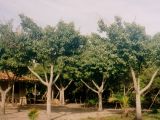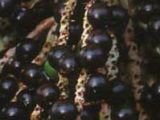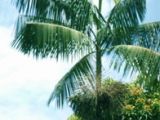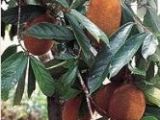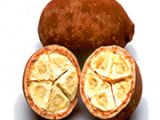Acai, bacuri and cupuacu.
These words may mean nothing to you, but in Brazil they sound more familiar, as they are three exotic fruits from the Amazonia.
The nutritious acai is produced by a slender palm tree, acai palm or manaca (Euterpe oleracea), which thrives in the wet marshes and alluvial plains of the lower Amazon and Tocantins (Para state), but also on the Atlantic coast of the Brazil. The trunk of the palm can be 23 m (77 ft) tall.
Between the August and December, the palm burdens with 6-8 cluster, each one with 700-900 fruits, the size of a cherry. As the trees are tall, the climbers use a strip made of acai fibers. They encircle the trunk with it, introduce their feet in it, and go up while securing with the hands over the head level till they reach the first cluster.
The cluster cannot be dropped, because the fruits would be destroyed, so the climber must descend the same way, but establishing a kind of balance with the fruits.
The vivid-blue fleshed acai fruits have a high caloric content and are rich in iron, calcium, phosphorus, potassium, and vitamins B1 and B2. Sportsmen use them as bracing and mothers as nutritive supply for their offspring. In Brazil, a beverage is made by mixing the fruit with water, sugar and tapioca (manioc flour).
The fruit can be smashed in heated water and passed through a sieve to achieve a dense and aromatic soda.
The fruits can be employed to flavor dried shrimps and manioc.
Moreover, the palm's heart (the upper bud) is a delicacy in salads, the roots are excellent anti-parasite drugs, the wood is good for constructions and leaves are a good forage and material for making paper; the fibers are employed for making brooms.
Bacuri (Platonis insignis) is an ornamental tree, 20-40 m (66-133 ft) tall with a cup like an upside down cone.
The fruit is the size of an orange but oval, with a thicker skin of a lemon yellow color.
The seeds are covered by a white, sticky, flavored, and bittersweet pulp, rich in phosphorus, iron and vitamin C, which in Brazil is mixed with syrup, jelly, compote and beverages. The oily black seeds are used in treating skin affections.
The yellow timber is employed in constructions.
Cupuacu or cupuarana (Theobroma grandiflorum) is a close relative of the cacao tree (Theobroma cacao).
The seeds contain a substance similar to coca butter, the main ingredient of the chocolate. This tree occurs naturally in the Amazon region but it is cultivated all over Brazil, even on the coast state of Espiritu Santo.
The brown hard bark of the tree can be employed in constructions.
When the tree is 8 years old, its branches cover with clusters of fruits and flowers. From its large branches, covered by cinnamon colored leaves, hairy fruits hang, of oval shapes and brown shades, each weighing 1-1.5 kg (2.5-3.8 pounds).
Their smell is strong but the flavored acid pulp is excellent for making sherbet and other desserts. Amongst other tropical flavors of Brazil can be mentioned jaca, umbu, biriba, buriti, mangaba, murici, sapoti, cajarana, graviola, maracuja or jabuticaba.
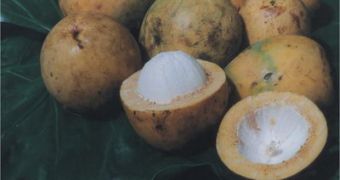
 14 DAY TRIAL //
14 DAY TRIAL // 
